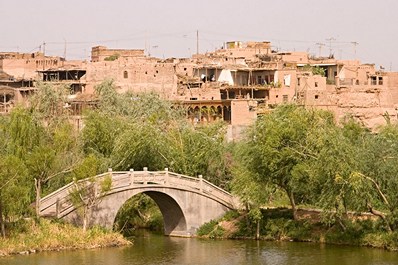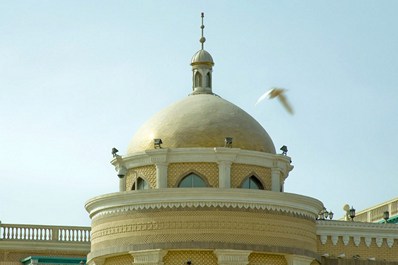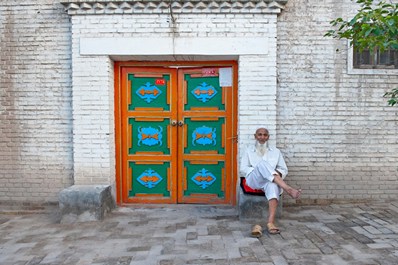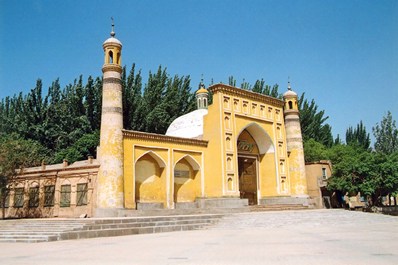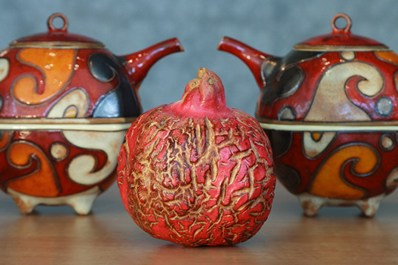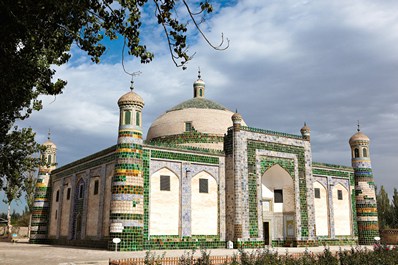The rich and unique history of the ancient Kashgar
The history of Kashgar begins in the I millennium BC, when the tribes of Yuedzhi, Usuns and Saks were roaming around the vast expanses of the Taklamakan Desert and the piedmont slopes of the Pamir. Wandering from one encampment to another in the oases, they eventually began founding small settlements, which later were developed into cities on the Silk Road.
In the II century BC Yuedzhi tribes forced out the Usuns from the territory of Kashgar as well as whole East Turkestan and founded one of the largest and most powerful states of the ancient East - the Kushan Empire. It was one of the world’s strongest nations, which established equal trade and political relations with the Roman Empire. It was the dawn of golden age of Kashgar, which developed into one of the biggest commercial cities in the East.
In the I century BC the Kushan kingdom had a political crisis coming on, which enabled the Kashgar rulers to become independent from the power of the Kushans, but shortly after it, East Turkestan fell under the vassal power of the Chinese Empire. In 60 BC a Han Dynasty emperor ordered to build a military governor residence there.
A new milestone in the city’s history begins with the IV century BC, when the territory of East Turkestan was peopled by Turkic tribes (including the Uyghurs), who subsequently founded the Turkic Khaganate there. After the collapse of the khaganate, Chinese troops recaptured Kashgar and other cities of East Turkestan, but in the VIII century, the city became independent again.
The X-XI centuries in the city’s history of the can be called the “golden era” of Kashgar. At that period the city became the capital of the state of the Karakhanids who expanded their power not only in the west of Eastern Turkestan, but also in the territory of Central Asia. Under Arslan Khan from the Karakhanid dynasty, Kashgar became one of the most beautiful cities in Central Asia.
The Mongol occupations left almost no marks for Kashgar and East Turkestan in general, since the local ruler Genghis Khan favored the Uyghur and concluded friendly agreements with them, but in the XIV century Kashgar was captured and completely destroyed by Tamerlane troops. By the XV century, the city was completely rebuilt, but from that time Kashgar lost its role as one of the main political and economic centers in Asia.
A new round of the city's history began in the XVIII century, when Chinese troops captured whole East Turkestan and finally annexed it to the Chinese Empire. Since then Kashgar became the heart of East Turkestan again and the center of the struggle of the Uighur for independence of their region from China. In 1864 Kashgar had the largest uprising in the history of the city – the Yakub-bek rebellion, which resulted in establishment of the Kashgar Khanate (State of Yettishar). For the period of 13 years, Kashgar was independent from the Qin Empire; however, after the death of Yakub-beg in 1877, Kashgar was annexed to China once again.
One of the main attractions of Kashgar is the Id Kah Mosque – one of the largest mosques in Central Asia and the largest in China. For Friday prayers, it brings together up to 10,000 people, many of whom are praying in the square outside the mosque. While during the holidays the Id Kah Mosque being a kind of pilgrimage for Chinese Muslims is visited by100,000 believers.
The mosque was built in 1442 by order of the governor of the city Shakessimirdzhi. The name of the mosque in Persian means “festive”. The mosque, with an area of 16,800 m2 can accommodate up to 20,000 worshipers. Although the Id Kah was built in the middle of the XV century, the age of the basement of the building is much older. The scientists believe that the base of the mosque belongs to the IX-XI centuries, to the period of the Karakhanid epoch. It is possible that at the site of the modern Id Kah Mosque there was a more ancient mosque of the Karakhanid era, destroyed as a result of Kashgar occupation in the XIV century by armies of Amir Timur.
The Id Kah is striking not only for its beauty but also for its grandeur. It does not look like a modern mosque in China, as it was constructed in a Central Asian style. The walls of the mosque are covered with yellow glazed tiles and decorated with various ornaments and inscriptions from the Koran. The mosque is decorated with three minarets: two of them are located at the corners of the portal arch, while the third one adorns the main dome of the mosque. The mosque interior décor is notable for its elegant simplicity. In front of the main hall there is a swimming pool for ablution. The central wall serves as a kind of a “throne” for the imam to read prayers.
The Id Kah Mosque is a functioning mosque, so all tours are conducted in between prayers. When visiting a mosque you should think of suitable clothes, while women should enter the mosque with their head covered.


